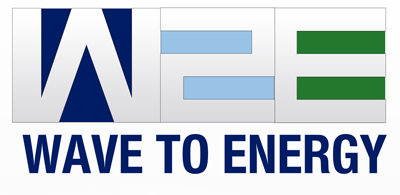Wave2Energy: Pioneering Technology Harnessing Wave Energy for Immediate and Indirect Utilization
Wave2Energy Highlights Research Through Informative Poster at Sustainable Solid Waste Management Conference
November 3, 2023Wave2Energy: Pioneering Technology Harnessing Wave Energy for Immediate and Indirect Utilization

The utilization of wave energy stands as a beacon of hope in the realm of renewable energy sources. Its energy density surpasses that of wind energy by a factor of 5 and solar energy by a staggering 10 to 30 times. Unlocking its potential would create novel opportunities, particularly in coastal areas with challenging accessibility from conventional sources and energy-intensive technologies such as seabed remediation. Despite its advantages, current wave energy collection technologies face limitations that hinder widespread adoption. Existing technologies are still in their early stages of development and have not yet reached a high level of technical maturity.
To address these challenges, Glafcos Marine E.P.E. and TM Solutions executed the project titled “Wave2Energy: Innovative Technology for Direct and Indirect Utilization of Wave Energy.” Under this project, a series of pilot energy production and marine sediment bioremediation units were developed and tested.
Specifically, the project partners showcased two pilot-scale wave energy utilization units. These units aimed to either produce and transmit electrical energy to the mainland or directly utilize wave energy for the bioremediation of seabeds polluted by human activities. In the latter case, the primary objective was to use wave energy to pressurize air into the seabed, rather than generating and transmitting electrical energy to the mainland.
During the pilot operations of these units, appropriate control software was developed to allow remote monitoring of unit performance, submersion for protection against extreme weather conditions, and element immobilization. For the bioremediation of the seabed, the operational system does not present permanent characteristics, as functions such as air infusion frequency, required air quantity based on pollutants and weather conditions, etc., are determined case-by-case based on the specific decontamination scenario.
The joint testing of the power generation and bioremediation units took place in Heraklion, Crete, particularly at the Pantanassa port. For more information regarding the project’s outcomes, visit the project website at https://wave2energy.gr/.
The WAVE2ENERGY project is co-funded by Greece and the European Union through the “Research – Create – Innovate” Action of the Operational Programme for the Implementation of the European Cohesion Policy 2014-2020 (ESPA).

